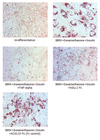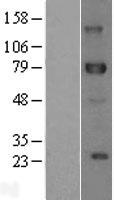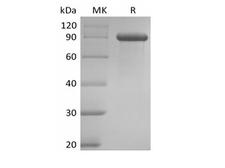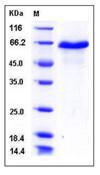Login
Registration enables users to use special features of this website, such as past
order histories, retained contact details for faster checkout, review submissions, and special promotions.
order histories, retained contact details for faster checkout, review submissions, and special promotions.
Forgot password?
Registration enables users to use special features of this website, such as past
order histories, retained contact details for faster checkout, review submissions, and special promotions.
order histories, retained contact details for faster checkout, review submissions, and special promotions.
Quick Order
Products
Antibodies
ELISA and Assay Kits
Research Areas
Infectious Disease
Resources
Purchasing
Reference Material
Contact Us
Location
Corporate Headquarters
Vector Laboratories, Inc.
6737 Mowry Ave
Newark, CA 94560
United States
Telephone Numbers
Customer Service: (800) 227-6666 / (650) 697-3600
Contact Us
Additional Contact Details
Login
Registration enables users to use special features of this website, such as past
order histories, retained contact details for faster checkout, review submissions, and special promotions.
order histories, retained contact details for faster checkout, review submissions, and special promotions.
Forgot password?
Registration enables users to use special features of this website, such as past
order histories, retained contact details for faster checkout, review submissions, and special promotions.
order histories, retained contact details for faster checkout, review submissions, and special promotions.
Quick Order
DLL1
delta-like 1 (Drosophila)
Acts as a ligand for Notch receptors. Blocks the differentiation of progenitor cells into the B-cell lineage while promoting the emergence of a population of cells with the characteristics of a T-cell/NK-cell precursor.
| Gene Name: | delta-like 1 (Drosophila) |
| Synonyms: | DLL1, Delta-like 1 (Drosophila), Delta (Drosophila)-like 1, Drosophila Delta homolog 1, Delta-like protein 1, Delta1, H-Delta-1, DL1, Npa |
| Target Sequences: | NM_005618 NP_005609.3 O00548 |
Publications (5)
1
Differential expression of Notch receptors and their ligands in desmoplastic ameloblastoma. Siar CH, Nakano K, Han PP, Nagatsuka H, Ng KH, Kawakami T. Journal of oral pathology & medicine : official publication of the International Association of Oral Pathologists and the American Academy of Oral Pathology. 2010 39:552-8. (IHC-P; Human)
[PubMed:20337864]
Related Antibodies: LS-B72.
2
Notch4 overexpression in ameloblastoma correlates with the solid/multicystic phenotype. Siar CH, Nagatsuka H, Chuah KS, Rivera RS, Nakano K, Ng KH, Kawakami T. Oral surgery, oral medicine, oral pathology, oral radiology, and endodontics. 2010 110:224-33. (IHC-P; Human)
[PubMed:20659700]
Related Antibodies: LS-B72.
3
Immunolocalization of notch signaling protein molecules in a maxillary chondrosarcoma and its recurrent tumor. Siar CH, Ha KO, Aung LO, Nakano K, Tsujigiwa H, Nagatsuka H, Ng KH, Kawakami T. European journal of medical research. 2010 15:456-60. (IHC-P; Human)
[Full Text Article]
[PubMed:21156405]
[PMC:PMC3352190]
Related Antibodies: LS-B72.
☰ Filters
Products
Proteins
(13)
Type
Over-Expression Lysate
(2)
Recombinant
(11)
Target
DLL1
(13)
Application
Bind
(2)
ELISA
(2)
Func
(2)
SDS-PAGE
(2)
Publications
No
(13)
Tag
DDK (Flag)
(1)
Fc, C-terminus
(1)
His
(1)
His, C-Terminal
(1)
His,C-terminus
(3)
Human IgG1 Fc
(1)
Human IgG1 Fc, C-terminus
(1)
Myc-DDK (Flag)
(3)
Species
Human
(10)
Mouse
(2)
Source
293T Cells
(1)
CHO Cells
(1)
E. coli
(1)
HEK 293 Cells
(7)
Human
(2)
Mammalian Cells
(1)
Purification
Purified
(4)
Low Endotoxin Level
Low endotoxin level
(10)
Biologically Active
Biologically active
(3)

CHO Cells
Human IgG1 Fc
Less than 0.01 EU/µg protein (determined by LAL method).
~100kDa (SDS-PAGE)
50 µg/$798; 10 µg/$389
HEK 293 Cells
Human IgG1 Fc, C-terminus
Less than 0.1 EU/µg protein (determined by LAL method).
~100 kDa (SDS-PAGE)
10 µg/$316; 50 µg/$428
Human
His, C-Terminal
Less than 1.0 EU/µg protein (determined by LAL method).
57.3kD
50 µg/$395; 500 µg/$1,585; 1 mg/$2,157; 10 µg/$277

HEK 293 Cells
Myc-DDK (Flag)
77.9 kDa
20 µg/$1,107

293T Cells
Myc-DDK (Flag)
77.9 kDa
20 µg/$215
HEK 293 Cells
None
Biologically active
Less than 0.1 ng/µg of protein (less than 1EU/µg).
57.0-60.0 kDa
5 µg/$268; 25 µg/$349

HEK 293 Cells
DDK (Flag)
Less than 0.1 EU/µg protein (determined by LAL method).
~70kDa (SDS-PAGE)
50 µg/$431; 10 µg/$323

HEK 293 Cells
Myc-DDK (Flag)
77.9 kDa
100 µg/$710

Human
Fc, C-terminus
Less than 1.0 EU/µg protein (determined by LAL method).
83.3 kDa
10 µg/$265
Mammalian Cells
His,C-terminus
Less than 1.0 EU/µg protein (determined by LAL method).
57.3 kDa
10 µg/$277
E. coli
214 AA
His
Less than 0.1 EU/µg protein (determined by LAL method).
23.65 kDa
10 mg/$4,268; 5 mg/$3,201; 1 mg/$1,868; 0.5 mg/$1,475; 200 µg/$1,103; 100 µg/$756; 50 µg/$531

HEK 293 Cells
His,C-terminus
Bind ELISA Func SDS-PAGE
Biologically active
Less than 1.0 EU/µg protein (determined by LAL method).
The recombinant mouse DLL1 consists of 506 amino acids and has a predicted molecular mass of 55 kDa. In SDS-PAGE under reducing conditions, the apparent molecular mass of rm DLL1 is approximately 65 kDa due to glycosylation.
100 µg/$441; 1 mg/$2,003

HEK 293 Cells
His,C-terminus
Bind ELISA Func SDS-PAGE
Biologically active
Less than 1.0 EU/µg protein (determined by LAL method).
The recombinant human DLL1 consists of 530 amino acids and predictes a molecular mass of 57.4 kDa. In SDS-PAGE under reducing conditions, rh DLL1 migrates as an approximately 58 kDa band due to glycosylation.
100 µg/$441; 1 mg/$2,003
Viewing 1-13
of 13
product results
If you do not find the reagent or information you require, please contact Customer.Support@LSBio.com to inquire about additional products in development.










